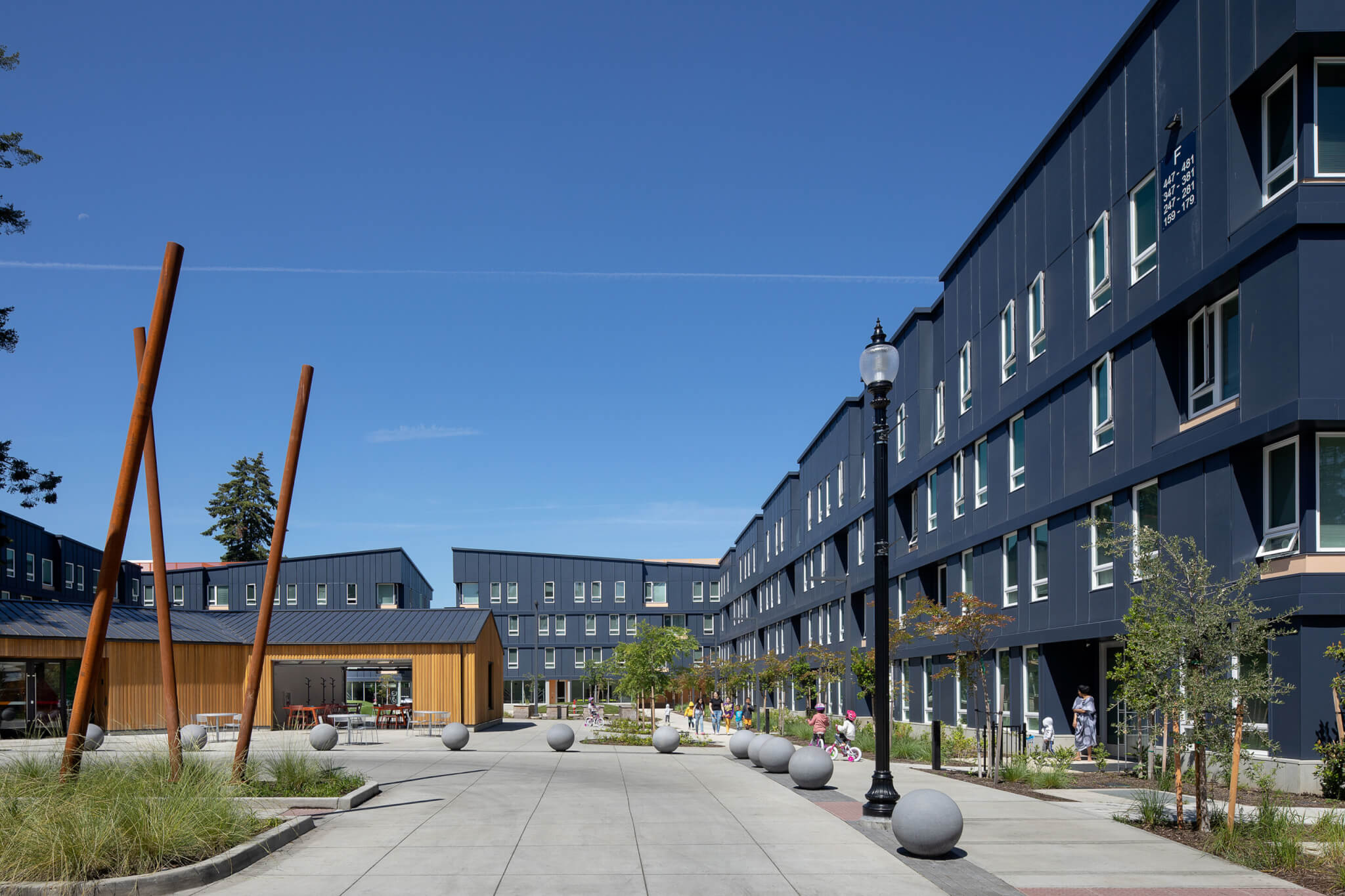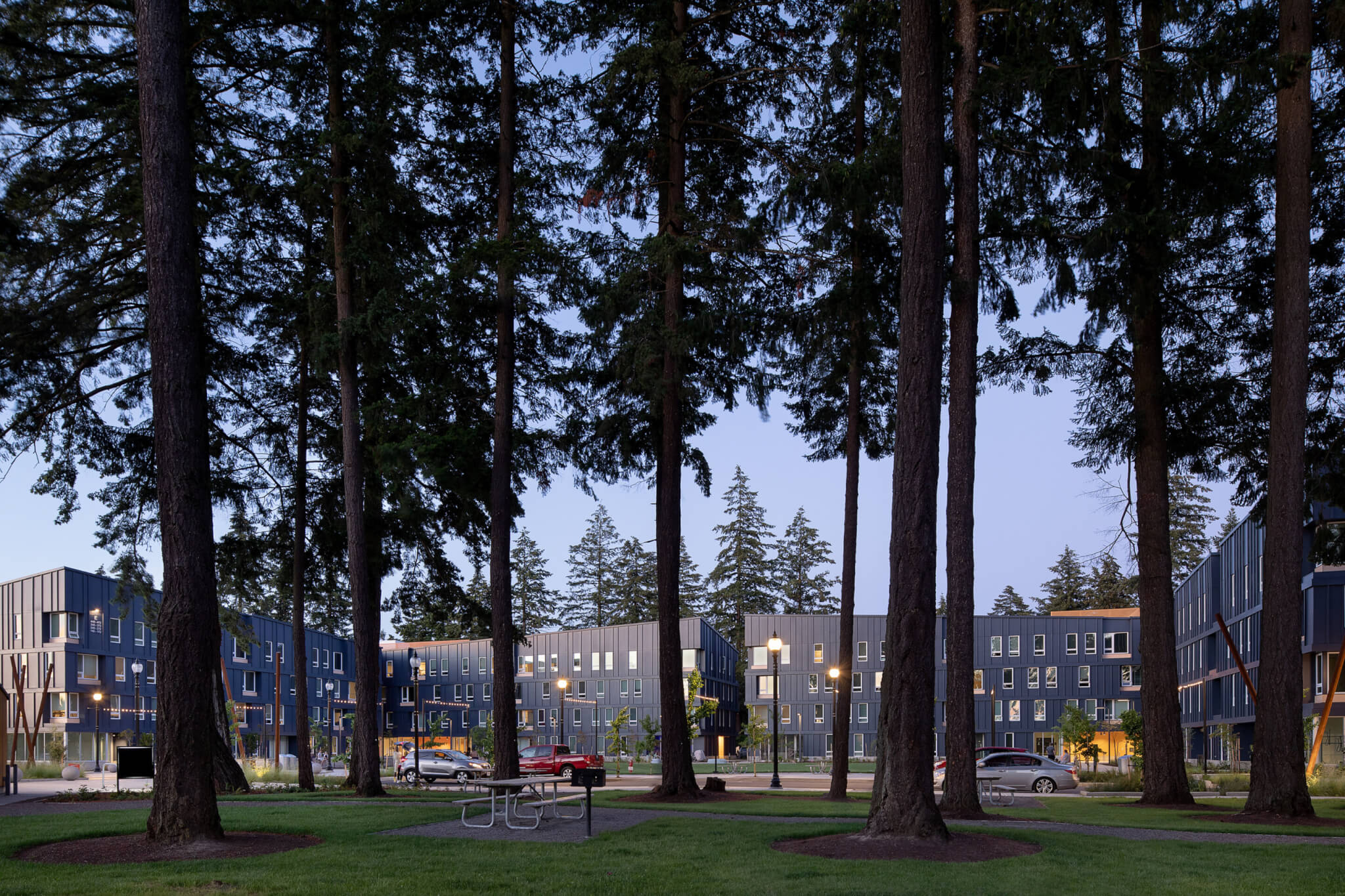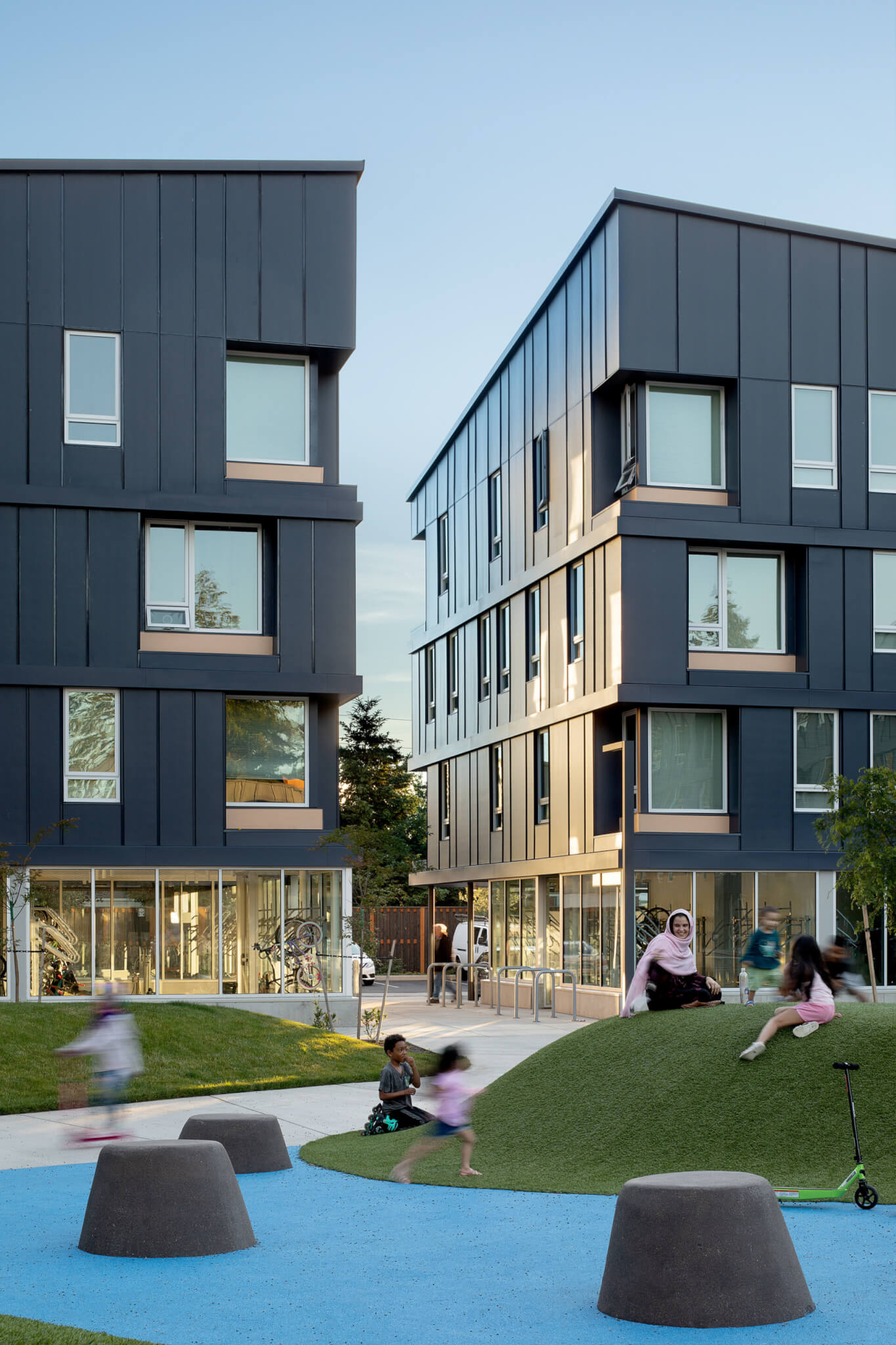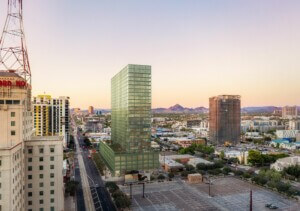Although the 224-unit, five-building Rockwood Village affordable housing in suburban Gresham, Oregon (about 10 miles outside of Portland), is Waechter Architecture’s largest project in the firm’s 15-year history, the design arguably succeeds by making the buildings a backdrop.
Completed in 2020, the $85.5 million Rockwood Village was designed to be family- and pedestrian-friendly, forming the perimeter of a 7.4-acre site that includes the new Neighbors Park at its center. “It’s awe-inspiring,” said Dena Compton, one of Rockwood’s first residents, who had previously been homeless and now occupies a brownstone-like ground floor apartment with her son. “There’s dozens of children out here playing every single day, and there’s a strong sense of community. When I was sick for a few days and not coming outside, my neighbor knocked on my door to make sure I was okay. That doesn’t happen everywhere.”

A familial atmosphere was indeed evident on my recent summer afternoon visit. A family was picnicking in the shade of tall Douglas fir trees at Neighbors Park, and in the adjacent single-story community center, older children were putting puzzles together in the common room. Its glass garage door opens to the plaza outside, where younger children occupied a landscaped play area designed by Portland landscape architecture firm PLACE. Around the corner, in the community garden near the development’s north entrance, flowers bloomed and greens were waiting to be harvested, as part of a partnership with Mudbone Grown, a local Black-owned, community-based farming enterprise.

Previously the site belonged to a charter middle school. When it halved its footprint and moved to one side, Rockwood Village moved in, promising to offer both high-density housing and open space. A majority of the apartments are three- and four-bedroom—often the most in-demand—and automobile parking is pushed to the perimeter of the property, away from the central park and plaza. “The identity is heavily rooted in the park at its center,” Waechter Architecture founder Ben Waechter said. “And all these windows on the park makes it a really a safe place for kids.”
A 2022 AIA Oregon Architecture Awards winner, the project is located in one of several mass transit–connected enclaves across the Portland metropolitan area. These areas have been zoned for higher density development (up to 40 multifamily housing units per acre). But because of the site’s size and history, and a relative lack of nearby green space, it was also zoned with an open-space overlay, even though there had never been public access there. Instead of lobbying for the overlay’s removal, owner Community Development Partners (CDP) negotiated to have it reduced to 2 acres.

“Instead of having 8 acres that weren’t accessible to the public, you have a 2-acre park that was privately funded, constructed, and maintained, but fully open to the public,” explained CDP founder Eric Paine. Neighbors Park now forms a kind of green space necklace with Vance Park to the south and the Downtown Rockwood plaza to the north. The overlay insulated the developers from eliminating public space, he added. “You would normally use that space for additional rentable square footage.”
Furthermore, the state-subsidized workforce housing project was originally intended only for those making 60 to 70 percent of the area median income (AMI), but as its construction neared completion, Rockwood Village received a $5 million grant from Portland’s regional government, which allowed the project to bring down income eligibility to 30 percent AMI, dramatically increasing accessibility as well as inclusivity.

The Rockwood neighborhood is Oregon’s most diverse, with over 60 languages spoken. To make sure the project met the community’s needs, CDP brought in a local housing nonprofit, Hacienda CDC, as a development partner and engaged the Portland State University School of Architecture’s Center for Public Interest Design to conduct community outreach as part of a master of architecture studio. In a public charrette, participants helped decide how to arrange the open space and emphasized the importance of preserving the tall firs, even if it meant reconfiguring the project’s entrance.
Both Hacienda and the majority of locals favored a courtyard-style configuration of buildings and open space. “When you have buildings around a central space, you can keep an eye on what’s going on there,” said Ernesto Fonseca, Hacienda CDC’s chief executive officer. “It creates that sense of being continuously and consistently invited to come and meet. You are naturally driven by design into the central plaza, and that concept is not something we had to research. It’s been working for thousands of years, from the Romans, the Mesopotamians, and the Persians, all the way to present day places like Mexico, where I’m from. We were very intentional about that.”










